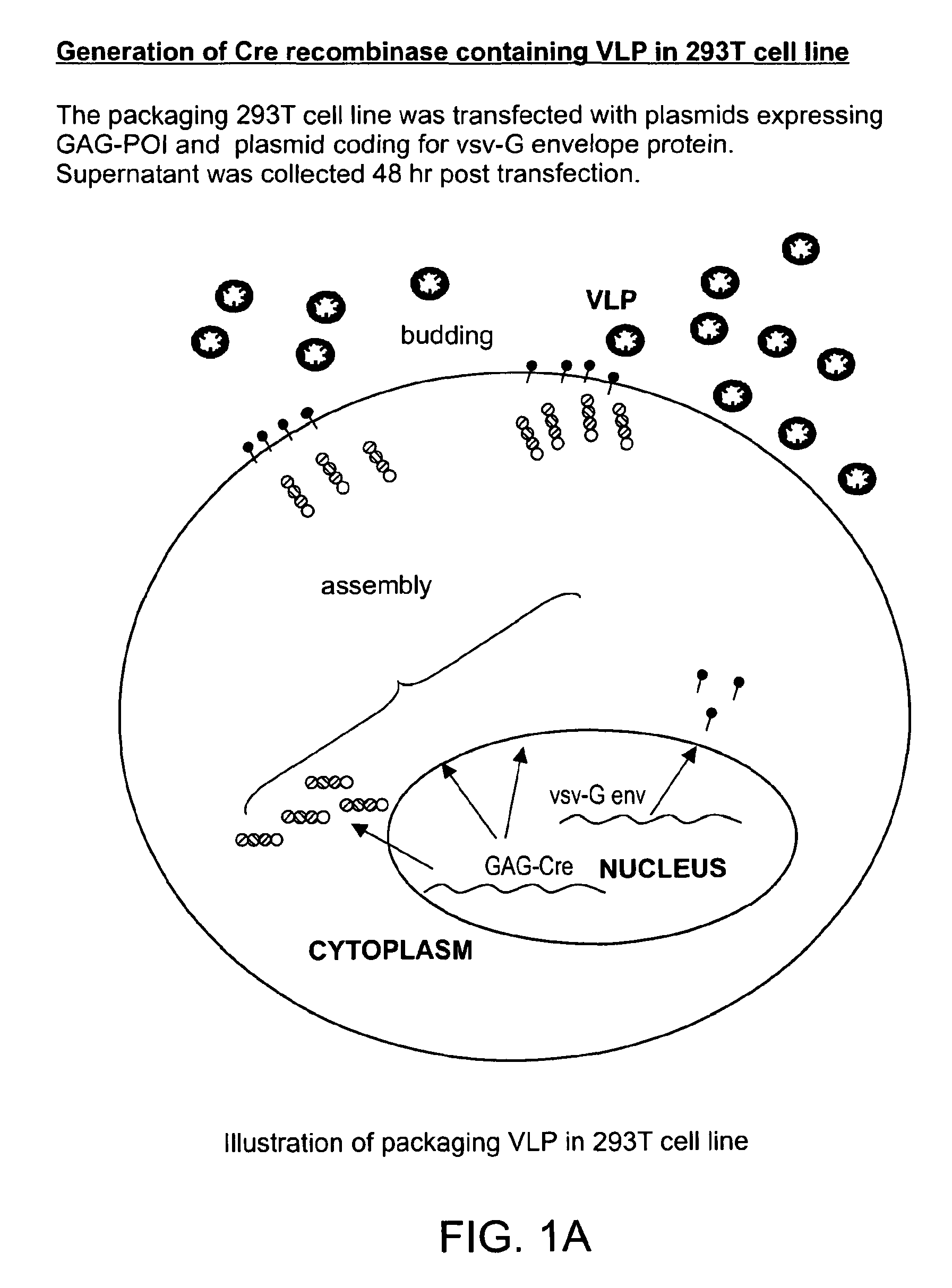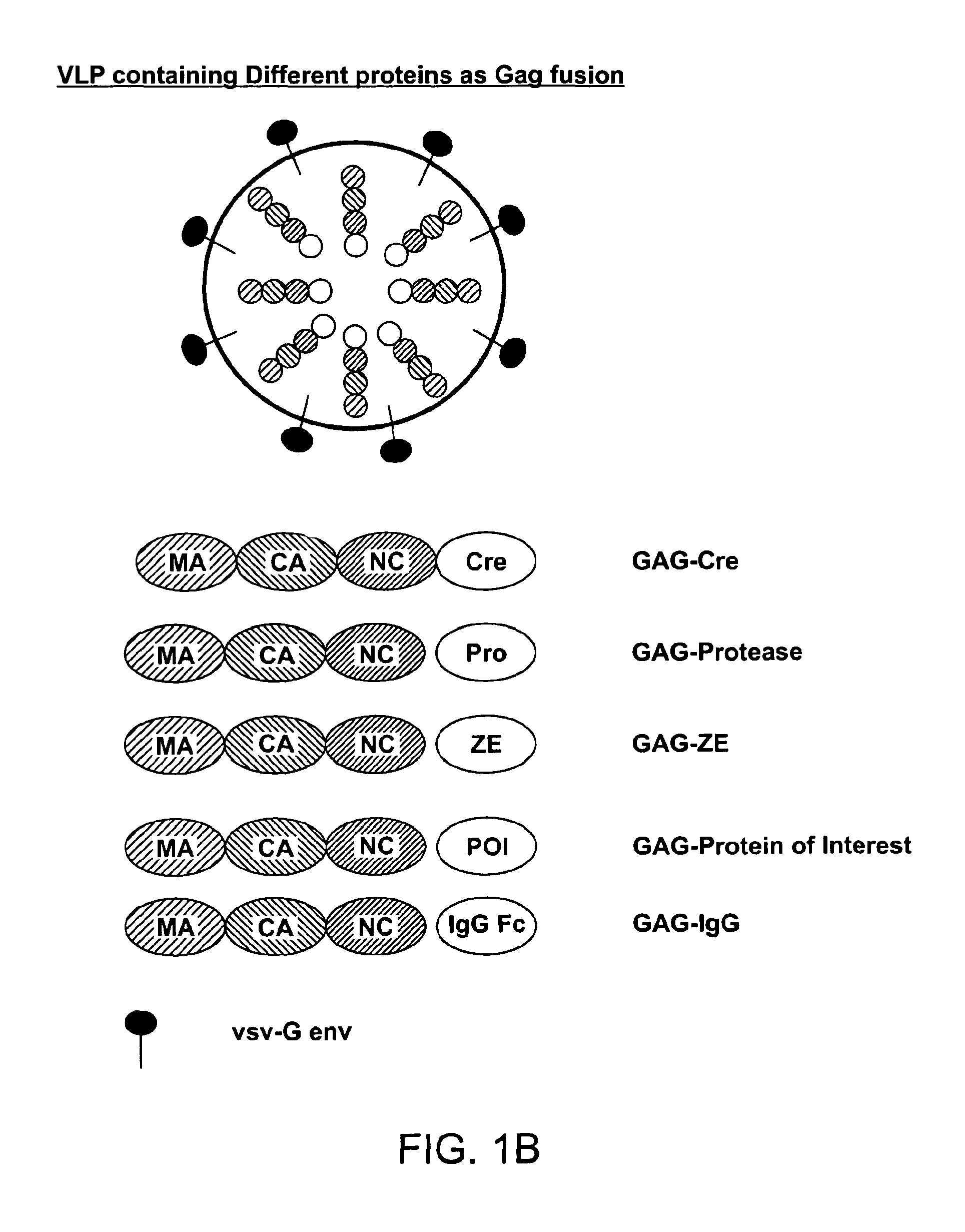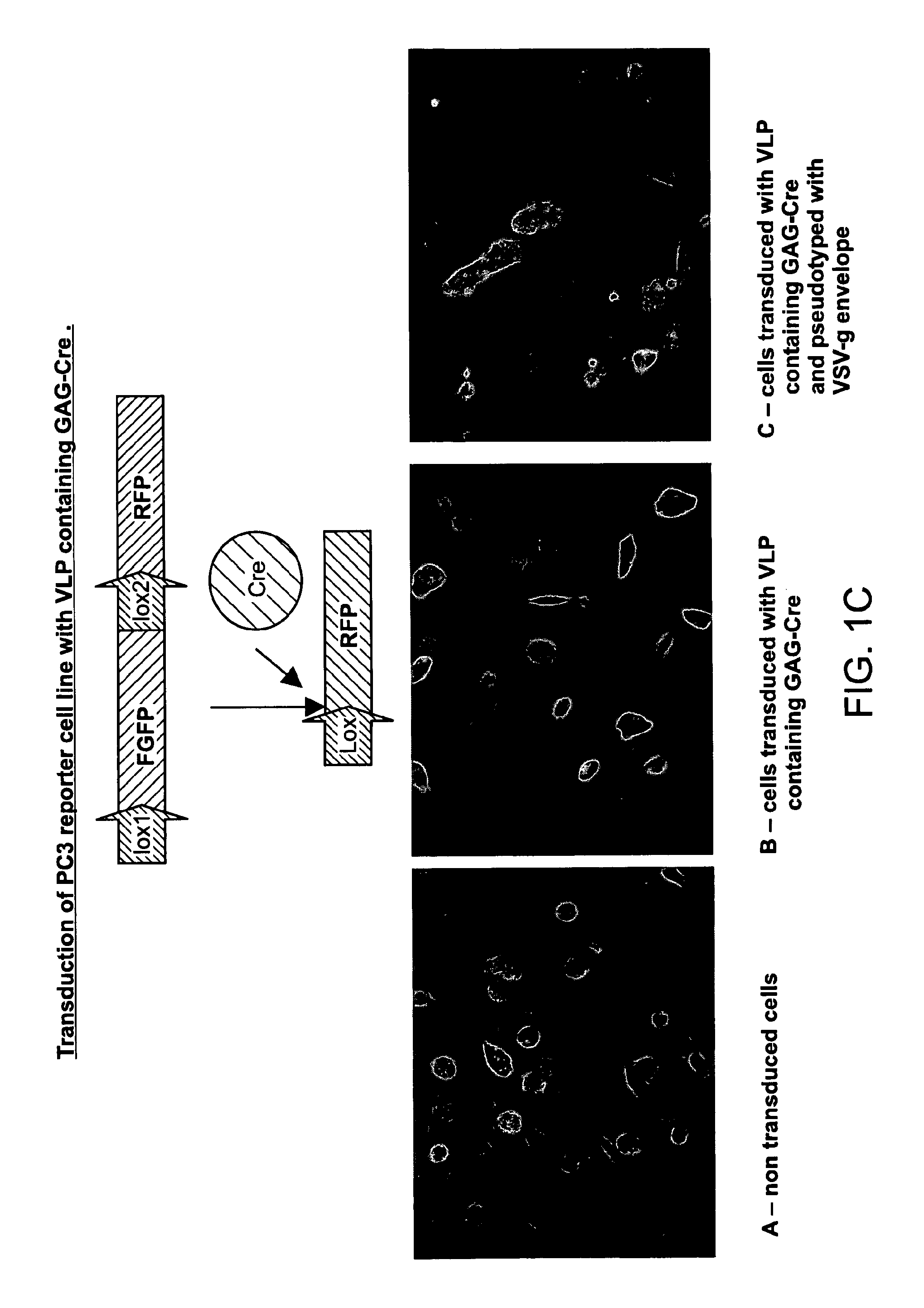Methods and compositions for protein delivery
a technology of protein and composition, applied in the direction of drug composition, peptide, enzymology, etc., can solve the problems of limiting the efficiency of gene transfer and the life-time of transduced cells, affecting the efficiency of gene transfer or oncogenic integration events, and affecting the efficiency of gene transfer and oncogenic integration
- Summary
- Abstract
- Description
- Claims
- Application Information
AI Technical Summary
Problems solved by technology
Method used
Image
Examples
example 1
Virus Like Particles and In Vitro Delivery to Cells
[0276]Virus like particles (VLPs) are retroviral particles that are devoid of genomic RNA and envelope. In the examples described herein, the VLP is used in a novel way to deliver biologically active proteins into target cells.
[0277]There are three components of VLPs to deliver proteins. The concept of the technology as exemplified in preferred embodiments of the present invention is shown in FIG. 1(a-c). In certain preferred embodiments, and as exemplified in these experiments, the protein to be delivered is fused as GAG poly-protein. FIG. 1(a-c) are schematics that illustrate the concept of the VLP technology according to preferred embodiments of the present invention. (a) shows generation of a Cre recombinase containing VLP in 293T cell line. (b) shows a VLP containing different proteins as a Gag fusion. (c) shows transduction of a PC3 reporter cell line with a VLP containing GAG-Cre as the GAG-protein of interest (POI).
[0278]In ...
example 2
VLPs for Study of Metastasis and Tissue Specific Gene Delivery In Vivo
[0306]Animal models are routinely used as tools for study of cancer etiology and therapy. At present transgene expression or knock out models of cancer established in mice falls short of addressing all aspects of cancer disease: such as initiation, progression and metastatic invasion of cancer. Most of these in vivo models do not generate metastatic tumors. There is immediate need for a simple in vivo model for sensitive detection and possible assessment of therapeutic agents for early detection of tumor initiation and metastatic invasion.
[0307]To address this issue, established cell lines derived form human tumors can be used and implanted into immuno-compromised mice to establish tumor growth (FIGS. 4a and 4b). Such tumor bearing animal will be used for experimentation addressing different aspect of cancer research. The human PC3 cell line is derived from carcinoma of prostate after failed antiandrogen chemother...
example 3
Tus, an E. coli Protein, Contains Mammalian Nuclear Targeting and Export Signals
[0310]Replication of the circular E. coli chromosome starts at the origin of replication (oriC), and proceeds bidirectionally to a region on the opposite side called Ter, where replication is terminated (1, 2). Within the Ter region are found ten short (˜20 bp) DNA sequences, called “Ter” sites, which are similar but not identical (3). Binding of Tus, a 35 kDa trans-acting protein, to the Ter sequences blocks movement of the DNA replication complex in an orientation-specific manner: Ter sites (with bound Tus) in the permissive orientation allow the replication complex to pass, whereas Tus / Ter complexes in the non-permissive orientation block its movement (4 and references there in).
[0311]The full length sequence of TUS is encoded NCBI Accession No. AAC74682, represented by the amino acid sequence set forth in SEQ ID NO: 1, shown below:
SEQ ID NO:1
[0312]1 marydlvdrl nttfrqmeqe laifaahleq hkllvarvfs 1pevkke...
PUM
| Property | Measurement | Unit |
|---|---|---|
| pH | aaaaa | aaaaa |
| temperatures | aaaaa | aaaaa |
| temperatures | aaaaa | aaaaa |
Abstract
Description
Claims
Application Information
 Login to View More
Login to View More - R&D
- Intellectual Property
- Life Sciences
- Materials
- Tech Scout
- Unparalleled Data Quality
- Higher Quality Content
- 60% Fewer Hallucinations
Browse by: Latest US Patents, China's latest patents, Technical Efficacy Thesaurus, Application Domain, Technology Topic, Popular Technical Reports.
© 2025 PatSnap. All rights reserved.Legal|Privacy policy|Modern Slavery Act Transparency Statement|Sitemap|About US| Contact US: help@patsnap.com



